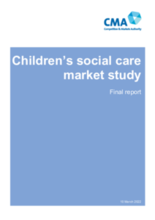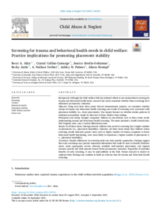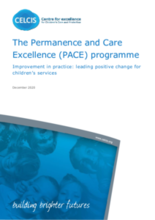Displaying 21 - 30 of 276
This is a market study conducted by the Competition and Markets Authority (CMA) into children's social care provision in the UK. The study found that there is a shortage of appropriate places in children’s homes and with foster carers, meaning that some children are not getting the right care from their placement. Some children are also being placed too far away from where they previously lived or in placements that require them to be separated from their siblings.The authors recommend the development of national and regional bodies to support local authorities with getting suitable placements for children in the UK.
Findings of this report suggest that early screenings for trauma and behavioral health needs may provide important information that could be used to identify children's needs, make appropriate service referrals, establish well-matched placements, and support resource parents and birth parents toward better permanency outcomes.
In this paper, authors demonstrate how a structured functional well-being assessment can be used with the custody population to promote an understanding of behavioral health needs, inform case planning, and measure functional improvement over time.
This study uses longitudinal administrative data to assess the decision to transfer a family to ongoing child welfare services within twelve months of an initial investigation.
This report provides an insight into the Permanence and Care Excellence (‘PACE’) programme – a Quality Improvement programme underway from 2014-2020 which engaged with local authority partnerships in 27 of the 32 Scottish local authority areas. The programme was aimed at supporting local authority partnerships across Scotland to reduce permanence planning timescales for looked after infants, children and young people using a Quality Improvement framework.
This research focused on a U.S. statewide program that uses team decision-making meetings to identify needs and plan services for youth who are at risk for instability while in foster care.
This article explores children’s views and experiences of participation within the context of child protection assessment practice.
This article studies how three groups of professional decision-makers – child welfare workers, experts on children and judges – exercise discretion in decisions on adoption from care in the Norwegian child welfare system.
Two parenting capacity assessment (PCA) protocols, with a short parent-child intervention embedded in each protocol, evaluated the potential for enhanced parenting to orient child placement decision.
The purpose of this study was to describe the stability of care histories from birth to age 18 for children in England using a national administrative social care dataset, the Children Looked After return (CLA).



